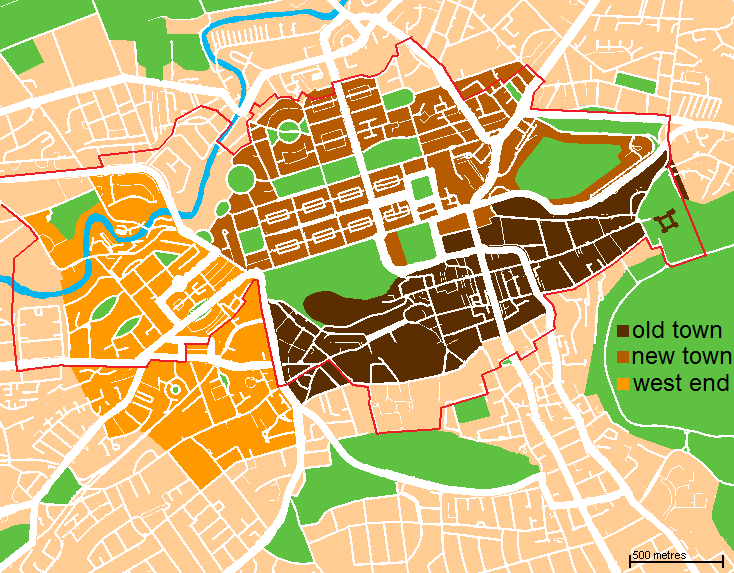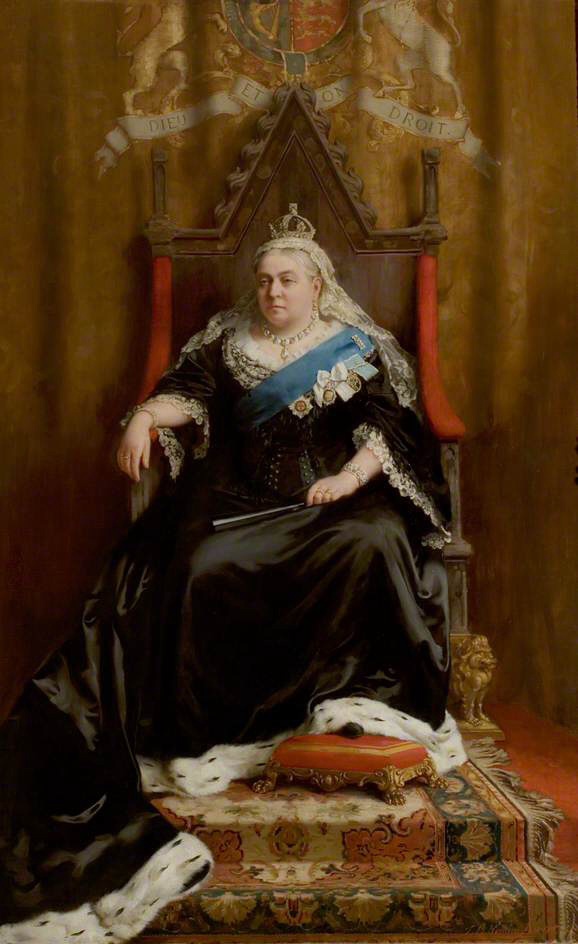|
Hugh Ford Crighton
Hugh Ford Crighton (1824–1886) was a successful Scottish portrait artist in the 19th century. Largely known for commissioned portraits, the works (which frequently appear at auction) are largely now "anonymous" in their subject matter as the sitters are not recorded on the paintings. Life He was born in Dalmellington, Ayrshire in 1824 the son of a Scots Guard who had fought at Waterloo. He originally trained as a tailor. He studied in Edinburgh and Paris. His fame as a portrait artist appears to have quickly spread from around 1845 onwards. As a successful Victorian artist Crighton could afford a very large flat, living at 40 Great King Street in Edinburgh's Second New Town. He left Edinburgh in the 1860s and moved to Sheffield. He sat on Sheffield Town Council 1869 to 1877 and lived and worked in that town for 30 years. His work here includes portraits of many of Sheffield's figures of note. He lived at 1 East Parade in Sheffield. In 1881 he returned to Scotland, living at ... [...More Info...] [...Related Items...] OR: [Wikipedia] [Google] [Baidu] |
Dalmellington
Dalmellington ( sco, Dawmellinton, gd, Dail M'Fhaolain) is a market town and civil parish in East Ayrshire, Scotland. In 2001 the village had a population of 1,407. The town owes its origins to the fault line separating the Southern Uplands of Scotland from the Central Lowlands. Dalmellington sits at the issue of a river from the uplands into Dalmellington Moss plain. The town has a history as a rest area, market town, weaving centre and mining village. The Chalmerston open cast coal mine to the north of the village covered some 742 hectares, but the operations have now ceased and the first phase of the site restoration has been completed. The town used to have a working museum to record the history of the area, but it was closed in January 2017. There are many Sites of Special Scientific Interest around Dalmellington, the most notable being the nearby Loch Doon. Selection of local views The Scottish Dark Sky Observatory was located near Dalmellington and is within the nort ... [...More Info...] [...Related Items...] OR: [Wikipedia] [Google] [Baidu] |
New Town, Edinburgh
The New Town is a central area of Edinburgh, the capital of Scotland. It was built in stages between 1767 and around 1850, and retains much of its original neo-classical and Georgian period architecture. Its best known street is Princes Street, facing Edinburgh Castle and the Old Town across the geological depression of the former Nor Loch. Together with the West End, the New Town was designated a UNESCO World Heritage Site alongside the Old Town in 1995. The area is also famed for the New Town Gardens, a heritage designation since March 2001. Proposal and planning The idea of a New Town was first suggested in the late 17th century when the Duke of Albany and York (later King James VII and II), when resident Royal Commissioner at Holyrood Palace, encouraged the idea of having an extended regality to the north of the city and a North Bridge. He gave the city a grant:That, when they should have occasion to enlarge their city by purchasing ground without the town, or to b ... [...More Info...] [...Related Items...] OR: [Wikipedia] [Google] [Baidu] |
Sheffield
Sheffield is a city status in the United Kingdom, city in South Yorkshire, England, whose name derives from the River Sheaf which runs through it. The city serves as the administrative centre of the City of Sheffield. It is Historic counties of England, historically part of the West Riding of Yorkshire and some of its southern suburbs were transferred from Derbyshire to the city council. It is the largest settlement in South Yorkshire. The city is in the eastern foothills of the Pennines and the valleys of the River Don, Yorkshire, River Don with its four tributaries: the River Loxley, Loxley, the Porter Brook, the River Rivelin, Rivelin and the River Sheaf, Sheaf. Sixty-one per cent of Sheffield's entire area is green space and a third of the city lies within the Peak District national park. There are more than 250 parks, woodlands and gardens in the city, which is estimated to contain around 4.5 million trees. The city is south of Leeds, east of Manchester, and north ... [...More Info...] [...Related Items...] OR: [Wikipedia] [Google] [Baidu] |
Scotland
Scotland (, ) is a country that is part of the United Kingdom. Covering the northern third of the island of Great Britain, mainland Scotland has a border with England to the southeast and is otherwise surrounded by the Atlantic Ocean to the north and west, the North Sea to the northeast and east, and the Irish Sea to the south. It also contains more than 790 islands, principally in the archipelagos of the Hebrides and the Northern Isles. Most of the population, including the capital Edinburgh, is concentrated in the Central Belt—the plain between the Scottish Highlands and the Southern Uplands—in the Scottish Lowlands. Scotland is divided into 32 administrative subdivisions or local authorities, known as council areas. Glasgow City is the largest council area in terms of population, with Highland being the largest in terms of area. Limited self-governing power, covering matters such as education, social services and roads and transportation, is devolved from the ... [...More Info...] [...Related Items...] OR: [Wikipedia] [Google] [Baidu] |
Partick
Partick ( sco, Pairtick, Scottish Gaelic: ''Partaig'') is an area of Glasgow on the north bank of the River Clyde, just across from Govan. To the west lies Whiteinch, to the east Yorkhill and Kelvingrove Park (across the River Kelvin), and to the north Broomhill, Hyndland, Dowanhill, Hillhead, areas which form part of the West End of Glasgow. Partick was a Police burgh from 1852 until 1912 when it was incorporated into the city.Second City of The Empire: 1830s to 1914 from theglasgowstory.com. Retrieved 22 December 2011. Partick is the area of the city most connected with the , and several Gaelic agencies, such as the Gaelic Books Council ( |
East Retford
East or Orient is one of the four cardinal directions or points of the compass. It is the opposite direction from west and is the direction from which the Sun rises on the Earth. Etymology As in other languages, the word is formed from the fact that east is the direction where the Sun rises: ''east'' comes from Middle English ''est'', from Old English ''ēast'', which itself comes from the Proto-Germanic *''aus-to-'' or *''austra-'' "east, toward the sunrise", from Proto-Indo-European *aus- "to shine," or "dawn", cognate with Old High German ''*ōstar'' "to the east", Latin ''aurora'' 'dawn', and Greek ''ēōs'' 'dawn, east'. Examples of the same formation in other languages include Latin oriens 'east, sunrise' from orior 'to rise, to originate', Greek ανατολή anatolé 'east' from ἀνατέλλω 'to rise' and Hebrew מִזְרָח mizraḥ 'east' from זָרַח zaraḥ 'to rise, to shine'. ''Ēostre'', a Germanic goddess of dawn, might have been a personification ... [...More Info...] [...Related Items...] OR: [Wikipedia] [Google] [Baidu] |
Retford Town Hall
Retford Town Hall is a municipal building in The Square, Retford, Nottinghamshire, England. The town hall, which was the meeting place of Retford Borough Council, is a grade II listed building. History Earlier buildings A moot hall was built in Retford in 1388 on a different site to the present town hall, in between the old market place and St Swithun's church, to the North of the current market place. It was a medieval timbered structure and was destroyed by the fire which devastated three-quarters of Retford in 1528. A new moot hall was built to replace the one destroyed by fire but by August 1754 it was in danger of collapse. The corporation of East Retford decided to demolish it. The 1528 moot hall was replaced with another building on the same site designed in the neoclassical style by Messrs White and Watson. This was completed in 1755. The design involved a symmetrical main frontage with seven bays facing onto the Market Place; the central section of three bays was pe ... [...More Info...] [...Related Items...] OR: [Wikipedia] [Google] [Baidu] |
Thomas Jessop
Thomas Jessop (31 January 1804, in Sheffield – 30 November 1887) was a steelmaker who became Mayor of Sheffield (1863-1864) and Master Cutler (1863). As Mayor, he had to deal with the Great Sheffield Flood of 1864. Family Thomas Jessop was born on Blast Lane, Sheffield, the son of William Jessop (1772–1835) and Rebecca Taylor (1770–1859), who had 3 other sons and 4 daughters. Thomas Jessop (1804-1887) He married Frances Yates Hope in 1848 and they had 5 daughters and one son, William (1856–1905). /ref> Life William Jessop was a steelmaker and the father and sons jointly built up the business to be one of the largest steel makers in Sheffield.[...More Info...] [...Related Items...] OR: [Wikipedia] [Google] [Baidu] |
Sheffield Town Hall
Sheffield Town Hall is a municipal building on Pinstone Street in the City of Sheffield, England. The building is used by Sheffield City Council, and also contains a publicly displayed collection of silverware. It is a Grade I listed building. History The current building, commissioned to replace the Old Town Hall, was designed by the London-based architect Edward William Mountford in the Renaissance Revival style and constructed between 1890 and 1897. The building was opened by Queen Victoria, using a remote control lock from her carriage, on 21 May 1897. The turning of the key in the lock triggered a light in the building which was the signal for three concealed men to open the gates. An extension designed by F. E. P. Edwards was opened by the Prince of Wales on 29 May 1923. The gardens were first laid out in 1938, following the demolition of St Paul's Church. Originally named St Paul's Gardens, they were immediately nicknamed the "Peace Gardens", marking the contemporary ... [...More Info...] [...Related Items...] OR: [Wikipedia] [Google] [Baidu] |
William Jeffcock
William Jeffcock, JP (1800 – 1871) a coal-master of Jeffcock, Dunn & Co., later known as the Sheffield Coal Company, Ltd.Family Recollections, by William Philip Jeffcock, published 1941 became the first Mayor of Sheffield in 1843. Biography Jeffcock was born in April 1800 in Handsworth, South Yorkshire, the son of John Jeffcock,High Hazels Park - a short history Friends of High Hazel a colliery owner (1763 – 1814).'''', 13 September 1814, Births, Deaths, Marriages and Obituaries On 2 January 1827 he married Judith Stobart. [...More Info...] [...Related Items...] OR: [Wikipedia] [Google] [Baidu] |
Henry Seebohm
Henry Seebohm (12 July 1832 – 26 November 1895) was an English steel manufacturer, and amateur ornithologist, oologist and traveller. Biography Henry was the oldest son of Benjamin Seebohm (1798–1871) who was a wool merchant at Horton Grange, Bradford. The family had moved to England from Bad Pyrmont in Germany. Henry's mother Estther Wheeler (1798–1864) was a granddaughter of William Tuke. The Seebohms were active in the Society of Friends and Henry schooled within the community in York. He worked initially in a grocery as an assistant but moved to Sheffield where he became a steel manufacturer. He married Maria, daughter of George John Healey, a merchant in Manchester on 19 January 1859. Natural history Henry became interested in natural history at school and continued to spend his spare time studying birds on his journeys. He travelled widely visiting Greece, Scandinavia, Turkey, and South Africa. His expeditions to the Yenisey tundra of Siberia were described ... [...More Info...] [...Related Items...] OR: [Wikipedia] [Google] [Baidu] |





.jpg)


